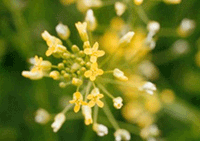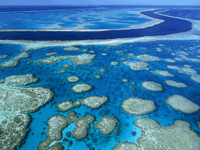
It’s a challenging goal that airlines have set for themselves – a zero-emissions airplane, and they’ve got to accomplish this within the next 50 years. But while working on the project, they’re still doing what they can to minimise the effects of global warming. Here are some efforts that we came across on our radar screen.

ANA started last year to provide in-flight amenities that were ecologically friendly such as paper napkins made from non-wood materials and biomass-based plastic cups, manufactured using a special process that emits over 90 percent less carbon dioxide. Chopsticks during meals were produced from a domestic wood recycling project. It also trialed eco-packaged cosmetics from Shisheido, while a small range of eco-friendly merchandise was sold in the in-flight duty free service.
CATHAY PACIFIC and DRAGONAIR initiated in 2007 the FLY Greener offset scheme, which works by having passengers use cash or Asia Miles to offset the carbon dioxide emissions of their flight. Through an on-line calculator, they will be shown how much carbon dioxide is released by their trip, after which they can decide to pay for one flight only or make a lump sum contribution.
Cathay Pacific also claims it has improved fuel efficiency across its fleet by 20 percent since 1998, as well as reducing noise, wate and water in its operations. The carrier added that while modern aircraft was increasingly fuel efficient, flying “inevitably releases carbon dixide and other greenhouse gases into the atmosphere – there are currenty no emissions-free substitutes for jet fuel”. It promised, however, to closely monitor any research findings in this area.
JAPAN AIRLINES has a range of green programmes, including the Global Warming Observation Project, Boreal Forest Fire Control Initiative, Recycling/Green Procurement and Team Minus 6%, all dedicated to lowering the impact of its operations on the planet. Its most effective, the airline believes, is the nationwide initiative, Team Minus 6 percent (aimed at reducing air conditioning during the summer months and heating during the winter season), which has helped reduced CO2 emissions in its Tokyo headquarters and offices at Narita and Haneda airports by 10 percent over the past five years.
In January 2009, the airline pioneered a demonstration flight, using 50 percent sustainable biofuel with three sustainable fuel feedstocks, including the camelina plant (above left), and 50 percent traditional Jet-A jet (kerosene) fuel on one of the engines of a Boeing B747-300 aircraft. No passengers or payload was carried. From this test and others that followed, airline executives are hopeful that commercial aircraft will be able to switch to biofuels “within the next three to five years”.
Other airlines also conducting biofuel-powered aircraft tests include Air New Zealand, Continental, JetBlue, Lufthansa and Virgin Atlantic.
 QANTAS is committed to raising awareness on the effects of global warming on the Great Barrier Reef (right) through its “Seals for the Reef” programme. The airline has constantly encouraged employees to participate in environment related projects such as “Clean Up Australia Day”, which has been running for 16 years and involves the tidying up of the country’s city streets and coastline.
QANTAS is committed to raising awareness on the effects of global warming on the Great Barrier Reef (right) through its “Seals for the Reef” programme. The airline has constantly encouraged employees to participate in environment related projects such as “Clean Up Australia Day”, which has been running for 16 years and involves the tidying up of the country’s city streets and coastline.
SINGAPORE AIRLINES is taking steps to achieve a paperless cabin, starting by introducing an electronic version of its onboard publications, SilverKris travel magazine, KrisShop inflight sales catalogue and KrisWorld inflight entertainment guide on its KrisWorld IFE system. SIA intends to include other publications at a later stage as well as introduce e-newspapers and e-books onboard.
Divya Hiranandani and Margie T Logarta












